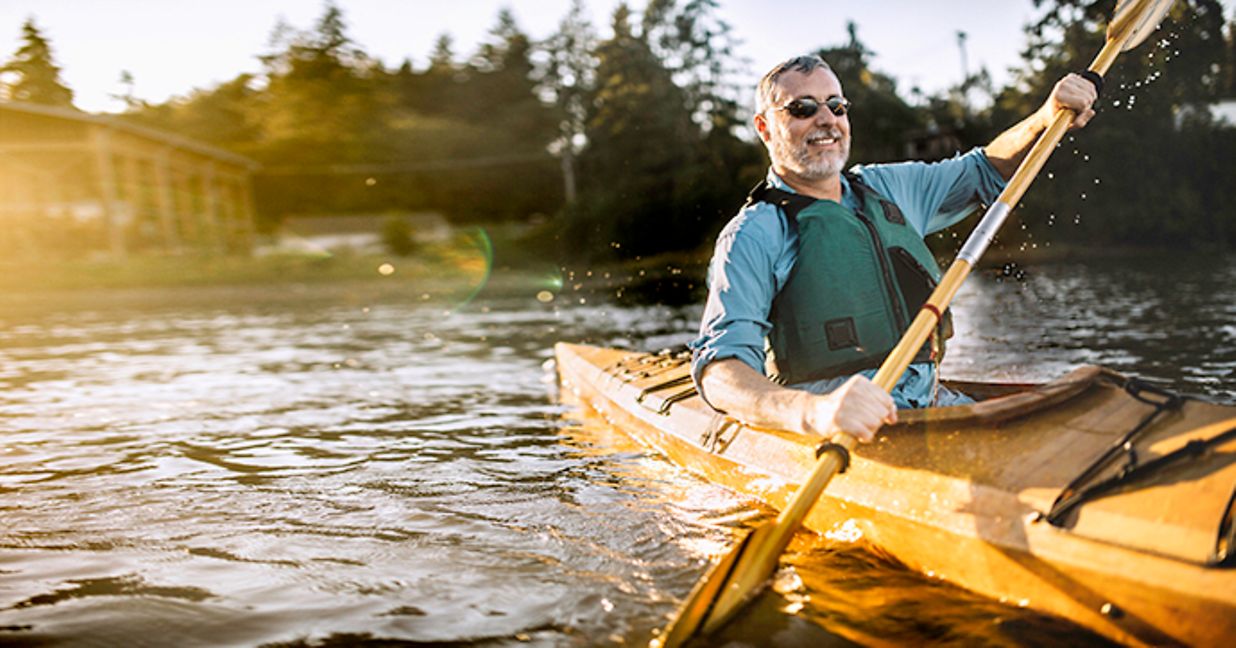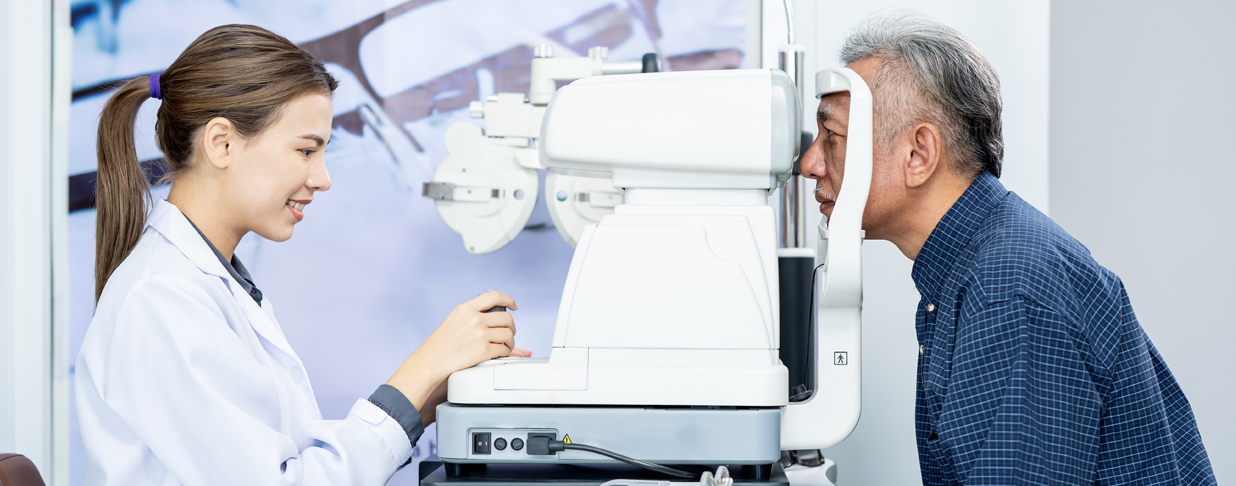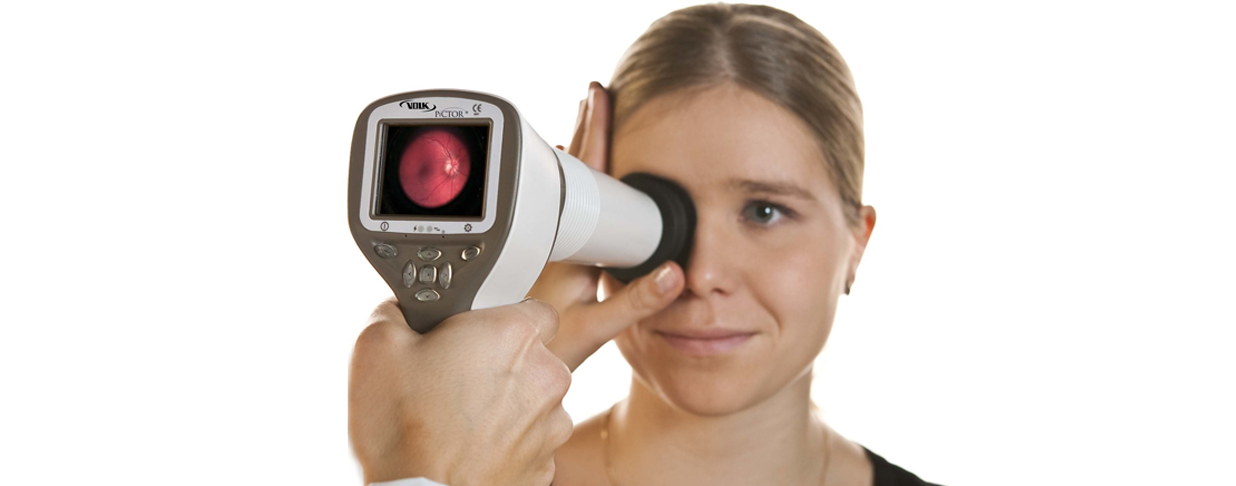By guest blogger: Brian Chou, OD
It’s that time of the year again, when many employees return from vacation season with boating tales and perhaps unfortunate sunburns. But what about vision issues that emerge later after sun exposure, like unexpected postcards?
May 19th starts National Safe Boating Week, a public campaign reminding people to “just wear it”—referring to life jackets and other safety precautions when enjoying water recreation. This is great advice that many need to know, and I’d like to tag on a “just wear it” reminder about safeguarding our eyes from the sun’s potentially harmful rays. If those summer postcards had another message, it’s this: remember to wear UV- and blue light-filtering sunglasses.
In addition to the dangers of sunburned eyes, many employees could use the reminder to protect their eyes from the summer blues. Less than 1 in 6 adults who wear sunglasses say they do so for eye health, according to a poll by the Vision Council. And nearly 20% do not believe their eyes are at risk from the sun.(1)
Do your employees understand the need to protect their eyes from UV and blue light out in the sun? And are they using their vision benefits to help get quality (and stylish) protection?
Soaking in the facts about blue light
Blue-violet color light rays are the sun’s shorter, more energetic rays. They’re what make the sky look blue. Most of the other color rays on the light spectrum emitted by the sun are longer and, therefore, have less energy that reaches the eyes. UV light from the sun, meanwhile, is not visible.
Blue light isn’t bad, in the right doses—we need it to boost alertness, regulate our sleep cycles and help our memories. But because there are other sources of blue light, such as computers, digital devices and flat-screen TVs, it may be all you hear about. But, you need to know the sun’s rays are at least 100 times more intense than indoor sources, so just 15 minutes on a boat in the sun could be like 10 hours of screen time for your eyes.(2)
And, because almost all blue light passes through the cornea and eye lens, it basically sun-bathes the light-sensitive retina if unprotected.(3) Emerging research points to a possible link between exposure to blue-violet light and age-related macular degeneration—along with other long-term vision issues.(4) When your eyes are exposed to unsafe amounts of blue light, it becomes “harmful.”
Reducing blue light exposure: It’s a-boat time
Chances are your sunny destination-bound employees do not know about the risks of sun exposure and blue light to their eyes—in fact, just 17% of people know the sun emits blue light(5), and 49% have never even heard of blue light(6).
That being said, research indicates when employees know the risks, they’re likely to take precautions. Here are some key findings from Transitions Optical’s 2018 Employee Perceptions of Vision Benefits survey(7):
• After learning just a little about blue light, 78% of employees surveyed said they would likely purchase eyewear with blue light protection within the next 12 months.
• Roughly half surveyed believe their eyewear provides blue light protection already.
• Nearly all employees surveyed, 96%, said they’d more likely use their vision benefits if they understood better what their plans cover.
“Moor” protection, “moor” savings
Do your vision benefits provide savings for blue light protection solutions?
Options may include protection built into the lens material or added as a coating. And photochromic options, like Transitions® lenses, for example, include technology that reduces exposure both indoors and out in the sun. You’ll probably know them as the lenses that are clear indoors and turn dark when outdoors.
You also want to look for sunglasses with labels that say either “99% UV protection guaranteed,” “100% protection guaranteed” or “UV 400.”
An eye doctor should make recommendations about the lenses an employee may need, but education about what’s covered can begin at the workplace. Here’s an educational story on blue light you can share with employees: Tips to protect your eyes from the blue light in the sky.
Also, if your company offers benefits through EyeMed, you can remind workers how EyeMed members qualify for 40% off additional pairs of prescription glasses and sunglasses, as well as 20% off non-prescription sunglasses. That includes popular designer brands, such as Tory Burch, Ray-Ban, Oakley and many others.
Whatever floats their boats, all employees should find eyewear protection that meets their tastes, styles and needs—both prescription and non-prescription. And, that’s worth writing home about.
To get more information on vision benefits for blue light protection through EyeMed, download this 1-page overview.
BL-1805-CB-495
1. “Most People—Even Kids—Need to Wear Sunglasses,” by Kathleen Doheny, WebMd Health News, May 17, 2012, http://www.webmd.com/eye-health/news/20120517/more-people-even-kids-need-to-wear-sunglasses.
2. EyeMed, “Don’t get burned by blue light,” May 23, 2017, citing Granger Baillet, 2016.
3. “Blue Light and Your Eyes,” Prevent Blindness, https://www.preventblindness.org/blue-light-and-your-eyes.
4. Dillon, James, et al., Transmission of light to the aging human retina: possible implications for age related macular degeneration, Experimental Eye Research, Volume 79, Issue 6, December 2004, Pages 753 – 75.doi:110.1016//j.exer.22004.06.025.
5. EyeMed, “Don’t get burned by blue light,” May 23, 2017, citing Transitions Optical Consumer Brand Tracking, Feb/Mar 2016; Wakefield Research, Nov 2015.
6. “Insight on Blue Light,” September 2017, http://thevitaminsee.com/2017/09/insight-blue-light.
7. 2018 Transitions Employee Perceptions of Vision Benefits Survey (METHODOLOGY: An online survey of 1,300 nationally representative U.S. adults, ages 18+, employed full-time or part-time, whose employer offers vision benefits).



